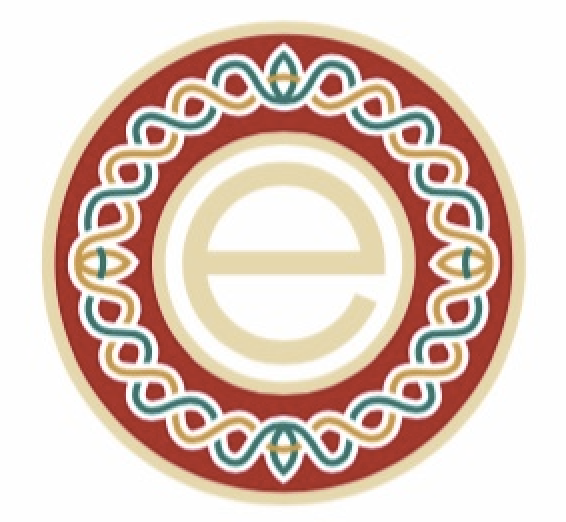64 results
-


Zürich. Braginsky Collection, B327

- Collection
- e-codices
- Library
- Zürich. Braginsky Collection
- Date
- 17th century, 18th century, [around 1800]
- Language
- Hebrew
-
Padua or Venice
-
The "Counting of the Omer" is a blessing that takes place during the 49 days from the second day of Passover
-


Zürich. Braginsky Collection, B351

- Collection
- e-codices
- Library
- Zürich. Braginsky Collection
- Date
- 18th century, 1741
- Language
- Hebrew
-
Until it was acquired by the Braginsky Collection, this little book with the Birkat ha-mason from 1741
-


Zürich. Braginsky Collection, B62

- Collection
- e-codices
- Library
- Zürich. Braginsky Collection
- Date
- 18th century, 1728
- Language
- Hebrew
-
In 1728 Meir Cohen Belinfante copied this decorated psalter from the 1670 printed edition by the Amsterdam
-


Zürich. Braginsky Collection, B49

- Collection
- e-codices
- Library
- Zürich. Braginsky Collection
- Date
- 16th century, 15th century, [ca. 1500]
- Language
- Hebrew
-
Padua or Venice
-
Halfan family of scribes and scholars, whose ancestors were among a group of Jews who were expelled from
-


Zürich. Braginsky Collection, B247

- Collection
- e-codices
- Library
- Zürich. Braginsky Collection
- Date
- 17th century, ca. 1670-1671
- Language
- Hebrew
-
or Hildesheim, Benedictine abbey (?)
-
They can be taken as a reaction to the Gregorian calendar, introduced in 1582.
-


Zürich. Braginsky Collection, S17

- Collection
- e-codices
- Library
- Zürich. Braginsky Collection
- Date
- 17th century, around 1675
- Language
- Hebrew
-
triumphal arch reminiscent of Roman Triumphal arches constructed for royal festivities throughout Europe from
-


Zürich. Braginsky Collection, B93

- Collection
- e-codices
- Library
- Zürich. Braginsky Collection
- Date
- 14th century, [second half of the 14th century (around 1391?)]
- Language
- Hebrew
-
Ibn Ezra, Abraham ben Meïr (attributed to)
-
This collection of cosmological treatises contains excerpts from a larger manuscript, presumably written
-


Zürich. Braginsky Collection, S12

- Collection
- e-codices
- Library
- Zürich. Braginsky Collection
- Date
- 18th century, around 1775
- Language
- Hebrew
-
Padua or Venice
-
Italy associated twisted columns with those of the Temple of Solomon, which they believed were brought to
-


Zürich. Braginsky Collection, B104

- Collection
- e-codices
- Library
- Zürich. Braginsky Collection
- Date
- 18th century, [second half of the 18th century]
- Language
- Hebrew
-
considered the most important scholar among Lithuanian Ashkenazi Jews; his teaching influences Judaism up to
-


Zürich. Braginsky Collection, B285

- Collection
- e-codices
- Library
- Zürich. Braginsky Collection
- Date
- 18th century, 1796
- Language
- Hebrew
-
The illustrations show similarities to later Haggadot by Joseph ben David of Leipnik, such as the Haggadah
-


Zürich. Braginsky Collection, B28

- Collection
- e-codices
- Library
- Zürich. Braginsky Collection
- Date
- 18th century, 1795
- Language
- Hebrew
-
The scribe Baruch ben Shemaria from Brest-Litovsk (Belarus) created this manuscript in Amsterdam in 1795
-


Zürich. Braginsky Collection, S13

- Collection
- e-codices
- Library
- Zürich. Braginsky Collection
- Date
- 18th century, 1746
- Language
- Hebrew
-
Scenes from the Esther narrative are positioned beneath each of the nineteen columns of text.
-


Zürich. Braginsky Collection, B332

- Collection
- e-codices
- Library
- Zürich. Braginsky Collection
- Date
- 18th century, 1755
- Language
- Latin
-
Doctoral diploma from the University of Padua for Israel Baruch Olmo
-


Zürich. Braginsky Collection, B222

- Collection
- e-codices
- Library
- Zürich. Braginsky Collection
- Date
- 18th century, 1723
- Language
- Hebrew
-
The psalms in this manuscript are subdivided according to the days of the week on which they are to be
-


Zürich. Braginsky Collection, B253

- Collection
- e-codices
- Library
- Zürich. Braginsky Collection
- Date
- 14th century, 15th century, [around 1400]
- Language
- Hebrew
-
In addition, it contains the entire text of the Haggadah, which at this time already tended to be copied
-


Zürich. Braginsky Collection, S58

- Collection
- e-codices
- Library
- Zürich. Braginsky Collection
- Date
- 18th century, 19th century, ca. 1900
- Language
- Hebrew
-
The reader is shown surrounded by men wearing fezes and children holding drums used as noisemakers to
-


Zürich. Braginsky Collection, B26

- Collection
- e-codices
- Library
- Zürich. Braginsky Collection
- Date
- 15th century, [last quarter of the fifteenth century]
- Language
- Hebrew
-
[Portugal, copied by a scribe named Moses or Aaron (?)]
-
This manuscript contains the full text of the Pentateuch and haftarot (weekly readings from the Prophets
-


Zürich. Braginsky Collection, K99

- Collection
- e-codices
- Library
- Zürich. Braginsky Collection
- Date
- 17th century, 1648
- Language
- Hebrew
-
The lavish decoration of this printed and hand-painted ketubah attests to the high esteem in which this
-


Zürich. Braginsky Collection, B133

- Collection
- e-codices
- Library
- Zürich. Braginsky Collection
- Date
- 17th century, 1615
- Language
- Hebrew
-
Upper Galilee), which became the new center of the kabbalistic movement after the expulsion of the Jews from
-


Zürich. Braginsky Collection, K40

- Collection
- e-codices
- Library
- Zürich. Braginsky Collection
- Date
- 18th century, 1795
- Language
- Hebrew
-
arches were commonly used as framing devices in ketubah decorations since the earliest known ketubot from
- Please select items from search results or item pages.








































